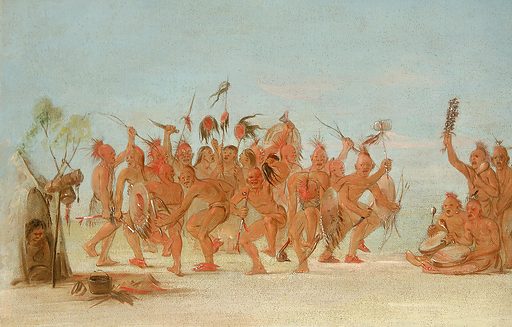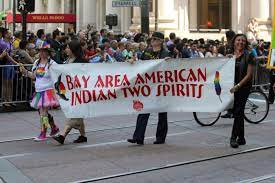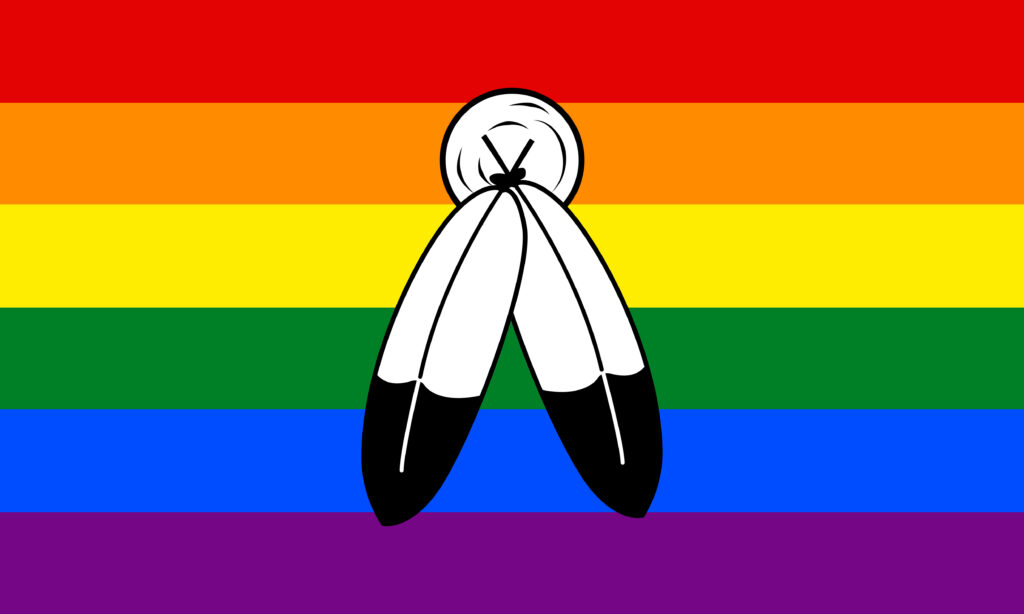It was the year 1886, European settlers were aggressively expanding across the United States, taking over land already inhabited by Native American tribes and using violent means against those who resisted. Against this background, the presence of We’Wha, an artist from the Zuni tribe, in Washington D.C. during this time is especially remarkable. We’Wha was invited to visit the nation’s capital by Matilda Coxe Stevenson, a prominent anthropologist who was studying Native American cultures. Stevenson had become interested in Zuni culture and had corresponded with We’Wha about their work and community. During their stay, We’wha participated in numerous cultural demonstrations, including weaving and pottery-making, and gave presentations on Zuni culture and spirituality. Many important figures in Washington D.C., including President Grover Cleveland, were captivated by We’Wha, and invited her to several social gatherings.1 We’Wha’s visit to the nation’s capital was a groundbreaking moment in the representation of Native American culture in mainstream institutions. In both Anglo and Native American cultures, We’wha was known for being a respected Lhamana – a Zuni Two-Spirit.2
The term “Two-Spirit” is a contemporary umbrella term that is used to describe indigenous individuals who embody multiple gender identities, and have an alternative sexual orientation from heterosexuality.3 The term was first used in 1990 at the Indigenous Lesbian and Gay International Gathering in Winnipeg, Manitoba, Canada, where a group of Native American and Canadian First Nations individuals decided to replace the offensive term “berdache” with a term that better reflected the cultural and spiritual traditions of their people. 4 Two-Spirit is a term that reflects the social, spiritual, and cultural identities of indigenous communities that have always recognized the existence of multiple gender identities.5
Two-Spirit individuals often have a unique gender identity and expression that does not fit into the male/female binary. This can include dressing in both traditionally masculine and feminine clothing, adopting traditionally male or female roles, or having unique names and pronouns.6 While the role of Two-Spirit individuals within their tribes varied across the Native American societies, because of their unique perspectives and contributions they were often highly respected and honored individuals. Since Two-Spirit individuals were often viewed as possessing both male and female spirits, they held unique spiritual and healing powers. They were also seen as keepers of traditional knowledge and culture, and could occupy important positions of leadership within their communities.7

We’Wha’s status as a Two-Spirit allowed her to occupy a special position within Zuni society and to navigate both the male and female spheres of influence. She was not only an artist but also a skilled weaver, a talented potter, and a respected religious leader. As a Two-Spirit, he was also involved in spiritual activities and ceremonies, and was said to have a strong connection to the spiritual realm. We’Wha was able to bridge traditional Zuni culture with the rapidly changing outside world, and was respected and admired for her unique insights.2
His status as a Two-Spirit also played a significant role in their interactions with anthropologists and other outsiders who came to study Native American culture. Two-Spirit people often served as cultural intermediaries between Native American communities and outsiders, using their knowledge and understanding of both cultures to facilitate communication and understanding.9 We’Wha used her position as a Two-Spirit to educate anthropologists and others about Zuni culture, and to advocate for her community’s interests and concerns. During her time spent working in Washington D.C., We’Wha and anthropologist Matilda Coxe Stevenson formed a close friendship centered around their passion for Native American culture. Their bond was a testament to their mutual respect and admiration for each other, especially given the social and cultural norms of the 19th century.10
The colonization of Native American lands by Europeans had a significant impact on Two-Spirited people, who faced discrimination, persecution, and cultural erasure as a result of colonial policies and attitudes. The enforcement of European gender norms and sexuality on Native American communities led to the marginalization of Two-Spirited people, who were often viewed as deviant or abnormal. Missionaries and other outsiders who sought to “civilize” Native American communities viewed Two-Spirit identities and practices as incompatible with Christian morality and European notions of gender and sexuality.11 They forced removal of Native American children from their families and communities and their placement in boarding schools also had a heavy impact on Two-Spirited people. These schools were often designed to erase Native American culture and identity, leaving Two-Spirit individuals particularly vulnerable to violence and abuse in these settings. The suppression of traditional cultural practices and the denial of spiritual and ceremonial roles to Two-Spirits also contributed to the erasure of the Two-Spirit identities and marginalization of Two-Spirit people within their own communities.12

We’Wha, despite the potential for discrimination, stood steadfast in her identity, and today she is revered as a significant figure in the history of the Two-Spirit and LGBTQ+ community. In recent years, there has been a renewed interest in her life and legacy, with scholars and activists highlighting his unique position as a Two-Spirit individual and her contributions to the preservation of Zuni culture. One example of this recognition can be seen in the creation of the We’Wha Award by the Santa Fe Human Rights Alliance in New Mexico, which is given annually to individuals who have made significant contributions to the LGBTQ+ community in the state. Additionally, there are efforts to recognize her contributions through art and education. For example, the Zuni Artist Cooperative in New Mexico features works by contemporary artists inspired by We’Wha’s legacy, including paintings and sculptures that depict her as a Two-Spirit individual and advocate for social justice. Furthermore, the Santa Fe Indian School, which was founded in 1890 and played a key role in educating Native American youth during the late 19th and 20th centuries has integrated We’Wha’s story into its curriculum as a way to teach students about the history of the Two-Spirit and LGBTQ+ community in Native American culture.13
With We’Wha as one of its many trailblazers, the modern-day Two-Spirit movement is seen as a way to restore cultural pride, healing, and resilience. Through various initiatives, such as the Two-Spirit Powwow and the establishment of Two-Spirit societies, the movement is reclaiming Two-Spirit identities and empowering individuals to embrace their identities. We’Wha’s life as a Two-Spirit and ambassador of the Zuni tribe to the outside world is a testament to the resilience and strength of indigenous people and their cultures.10

Despite the devastating effects of colonization and the erasure of Two-Spirit identities, the reclamation and celebration of these identities continue to this day. We’Wha’s legacy serves as a reminder that gender is not a fixed binary, but rather a complex and fluid spectrum. As we move forward, let us remember and celebrate the resilience, strength, and beauty of the Two-Spirit people who have come before us and those who continue to advocate for their rights and recognition. Let us take inspiration from We’Wha and the Two-Spirit people, and continue to fight for a world where all individuals are free to express their true selves without fear or judgment.
- Paul V. Kroskrity, “We’Wha and the construction of Zuni two-spirit identities,” in Queer Indigenous Studies: Critical interventions in theory, politics, and literature, ed. Qwo-Li Driskill, Chris Finley, Brian Joseph Gilley, and Scott Lauria Morgensen (University of Arizona Press, 2019), 63. ↵
- Brandman, Mariana, “We’wha,” National Women’s History Museum, 2021, www.womenshistory.org/education-resources/biographies/wewha. ↵
- Estrada, Gabriel. “Two Spirits, Nadleeh, and LGBTQ2 Navajo Gaze,” American Indian Culture and Research Journal 35, no. 4 (2011): 172, doi:10.17953/aicr.35.4x500172017344j30. ↵
- Kylan Mattias de Vries, “Berdache (Two-Spirit),” in Encyclopedia of Gender and Society, ed. Jodi O’Brien (Los Angeles: SAGE, 2009), 10.7. ↵
- Dennis Zotigh, “Pride Month 2020: Perspectives on LGBTQ Native Americans in Traditional Culture,” Smithsonian Voices, National Museum of the American Indian Smithsonian Magazine, June 16, 2020, https://www.smithsonianmag.com/blogs/national-museum-american-indian/2020/06/17/pride-2020/. ↵
- Qwo-Li Driskill, “Stolen From Our Bodies: First Nations Two Spirits/Queers and the Journey to a Sovereign Erotic,” Studies in American Indian Literatures 1, no. 2 (2004): 52. ↵
- Gabriel S. Estrada, “An Aztec Two-Spirit Cosmology: Re-Sounding Nahuatl Masculinities, Elders, Femininities, and Youth,” Frontiers: A Journal of Women Studies 24, no. 2/3 (2003): 11. ↵
- Brandman, Mariana, “We’wha,” National Women’s History Museum, 2021, www.womenshistory.org/education-resources/biographies/wewha. ↵
- Gregory D. Smithers, “Cherokee ‘Two Spirits’: Gender, Ritual, and Spirituality in the Native South,” Early American Studies 12, no. 3 (2014): 634. ↵
- Walter L. Williams, “The ‘two-Spirit’ People of Indigenous North Americans,” The Guardian, October 11, 2010, sec. Music, https://www.theguardian.com/music/2010/oct/11/two-spirit-people-north-america. ↵
- Gregory D. Smithers, “Cherokee ‘Two Spirits’: Gender, Ritual, and Spirituality in the Native South,” Early American Studies 12, no. 3 (2014): 642. ↵
- Qwo-Li Driskill, “Stolen From Our Bodies: First Nations Two Spirits/Queers and the Journey to a Sovereign Erotic,” Studies in American Indian Literatures 1, no. 2 (2004): 54. ↵
- Paul V. Kroskrity, “We’Wha and the construction of Zuni two-spirit identities,” in Queer Indigenous Studies: Critical interventions in theory, politics, and literature, ed. Qwo-Li Driskill, Chris Finley, Brian Joseph Gilley, and Scott Lauria Morgensen (University of Arizona Press, 2019), 49-60. ↵
- Walter L. Williams, “The ‘two-Spirit’ People of Indigenous North Americans,” The Guardian, October 11, 2010, sec. Music, https://www.theguardian.com/music/2010/oct/11/two-spirit-people-north-america. ↵




12 comments
Illeana Molina
Congratulations on your nominations. I love love love this topic and am interested in the two spirits as it is inspiring and or touching for those part of the LGBTQ+ community. I love hearing people sharing their stories, and the use of pronouns being respected is important to many individuals.
I hope the more awareness that is spread and love that is given to those there is less bullying and hate in the world.
Aaron Astudillo
Congratulations on the nomination. This is such an interesting topic to learn about, as the two spirits can be found to be inspirational for individuals of the LGBTQ+ community. They seem to be more themselves and are able to freely express themselves in a way to society.
Gabriella Parra
Eva! Congratulations on your nomination! I have just recently learned of the tradition of two-spirits, and I was really excited to learn more! I think it’s amazing that you bring this topic to light. I’m glad to see research being publish on the LGBTQIA+ community. I was happy to learn that, despite the great troubles they faced, two-spirit individuals continue to be true to themselves!
Isabel Soto
Congratulations on getting your article published! What an amazing article I enjoyed reading this so much. It is definitely different and such a unique piece to write about. How “True Spirit” can be seen as more than just a word, but a comforting term. At the end of the day, we should have strength and peace with everyone and their beliefs.
Osondra Fournier-Colon
Congratulations on your nomination; this article is fascinating on the Native American view of “Two Spirited” individuals. I had heard the term before but never understood its significance in Native American culture. As someone who identifies as nonbinary/gender, nonconforming it is so interesting to view a culture that embraces it in such an exciting way. I also love your interchange of the pronouns she/her and he/him; it shows significant respect.
Carina Martinez
Congratulations on your nomination! This was a beautifully written article. I had heard of two spirits before but not to this extent. I really enjoyed reading about this and how this legacy has existed. I hope we hear more of this. Great job!
Tabitha Babcock
Hi Eva! This is a great article! And congratulations on your well-deserved nomination. I think that “two spirit” is a beautiful term. It was fascinating to me that two-spirit people used to be honored and celebrated, but are now persecuted due to colonization. I’m glad people are finally starting to celebrate Wa’Wha’s legacy, via the award, the arts, and the school curriculum.
Danielle Sanchez
Congratulations on your nomination! This article was informative and well written! It was the year 1886, European settlers were aggressively expanding across the United States, taking over land already inhabited by Native American tribes and using violent means against those who resisted. The term “Two-Spirit” is a contemporary umbrella term that is used to describe indigenous individuals who embody multiple gender identities, and have an alternative sexual orientation from heterosexuality.
Hailey Koch
Congrats on the nomination for your article, it was very well written and had a great topic of choice. Before reading your article I was unaware of the term “Two spirits”. Though I don’t know too much about the matter I am now more informed on the topic. I believe We’Wha was very passionate about this topic and allowing people to be who they want and live a happy life. I think it’s important to understand and know about a topic such as this one since it is something very important in the world today.
Andrea Tapia
Hi Eva, Congratulations on getting your article published! What an amazing article I enjoyed reading this so much. It is definitely different and such a unique piece to write about. How “True Spirit” can be seen as more than just a word, but a comforting term. That we are both ourselves and our spirit, but not what we should be because of other things. To be able to express ourselves without any fear and judgment. At the end of the day, we should have strength and peace with everyone and their beliefs.